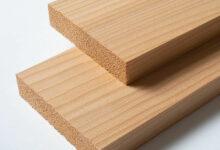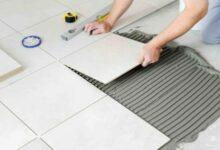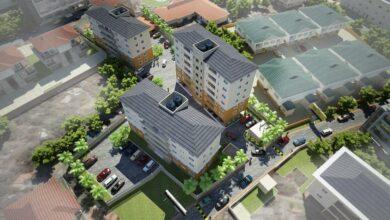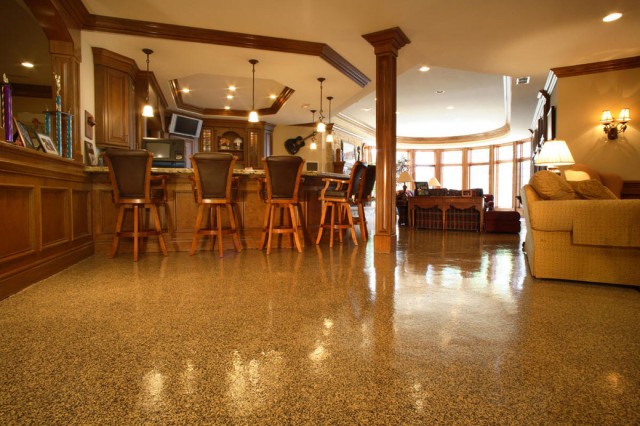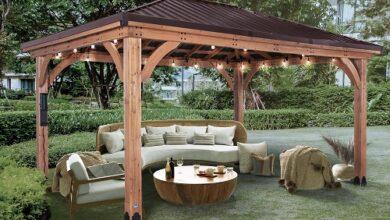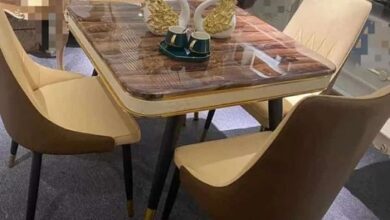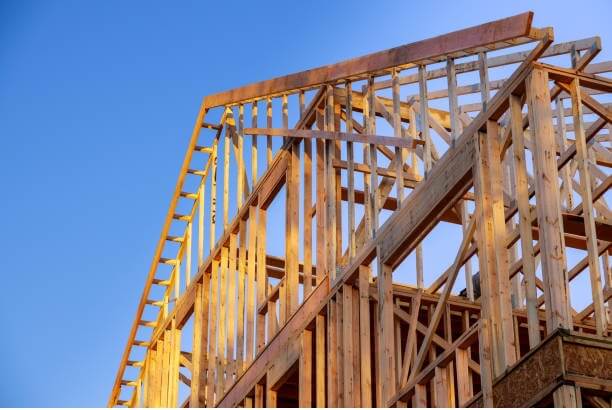
Top 15 Traditional Roofing Wood in Nigeria
Traditional Roofing Wood in Nigeria – Nigeria possesses a rich tradition of utilizing local woods to construct durable and beautiful rooftops. Before modern sheet metal and synthetics, Nigerian builders relied on resources from the country’s vast forests to make roofs that could withstand the tropical climate. By selecting woods ideal for roof beams, rafters, shakes, shingles and more, they created shelters tailored to local conditions. Information Guide Nigeria
This article will explore the top 15 types of traditional roofing wood found across Nigeria. It will analyze their unique properties and cultural significance while weighing the pros and cons of each species.
👉 Relocate to Canada Today!
Live, Study and Work in Canada. No Payment is Required! Hurry Now click here to Apply >> Immigrate to CanadaRead Also: Top 15 Local Wood Types for Roofing in Nigeria
The Top 15 Traditional Roofing Wood in Nigeria Are:
1. Opepe
First and foremost, Opepe remains one of the most commonly used roofing woods throughout Nigeria. Distinguished by its reddish-brown color and coarse texture, Opepe offers excellent strength, hardness and weather resistance. Easy to cut and shape as needed, Opepe suits everything from basic rafters to elaborate shingles. Its natural oils help deter termites, rot and fungi. Opepe also withstands heavy rain, sun, and humidity. Supplies are relatively abundant, though responsible harvesting is still crucial. For generations, Opepe’s versatility and durability have made it a staple roofing wood. Traditional Roofing Wood
2. Iroko
In addition, Iroko is another leading traditional roofing wood prized for its robustness and longevity. Iroko features coarse yellowish grains with reddish-brown tones that resist weathering and insect damage. Rich in oils, Iroko repels moisture, rot and termites. However, overharvesting means verifying sustainable sources is important. Where available, Iroko creates incredibly strong, enduring roofs. The famous Osun-Osogbo sacred grove features several Iroko roofs that have stood for centuries.
3. Mansonia
Moreover, Mansonia delivers exceptional durability and dimensional stability, rivaling even Iroko. This desirably dense hardwood has a reddish-brown color and tightly interlocked grains that resist splitting. Mansonia’s natural oils enhance its resistance to fungi, termites and moisture. However, supplies are declining due to exploitation. With responsible forestry, Mansonia makes robust, long-lasting roofs in Nigeria’s climate. Its strength and longevity reflect why it remains treasured.
Read Also: Top 15 Weather-Resistant Wood for Roofs in Nigeria
4. Utile
Furthermore, Utile serves as a common medium-density hardwood suitable for diverse roofing applications. Utile features a pale yellow hue when fresh cut that gradually turns reddish-brown once exposed. This wood offers excellent moisture resistance coupled with decent strength and stability. However, uncontrolled logging means verifying sustainable sources is imperative. Where properly managed, Utile provides an affordable and capable roofing wood. 15 Best Black Coffee in Nigeria
5. African Mahogany
In addition, African mahogany brings its rich warm hues and elegant grain patterns to Nigerian rooftops. Ranging from medium to dark reddish-brown, mahogany offers beauty and weather resistance. Easy to work, it suits everything from decorative eaves to wooden shingles. However, responsible harvesting is crucial as old-growth mahogany dwindles. Where sustainably sourced, mahogany continues to lend aesthetics and durability to roof frameworks.
6. Makore
Furthermore, Makore delivers bold visual appeal with its dark chocolate brown color and unique stripe patterns. A dense durable timber, Makore has traditionally served for shingles, tiles, and decorative carvings on roofs. It also possesses good dimensional stability. However, Makore requires protection from moisture and insects in wet conditions. As supplies shrink, ethical sourcing is essential to keep this treasured roofing wood available. 50 Best Online MBA Programs
👉 Relocate to Canada Today!
Live, Study and Work in Canada. No Payment is Required! Hurry Now click here to Apply >> Immigrate to Canada7. African Teak
Additionally, African teak, also called Afara, has long provided structural integrity to roofs due to its high density and strength qualities. Its coarse yellow grains enrich into grayish-brown tones over time. Teak’s high natural oil content enhances its weather and pest resistance. However, it still benefits from preservative treatment against cracking and warping. Conservation is vital as teak sources decline across Nigeria. Its sturdy qualities explain its roofing popularity.
Read Also: How To Start Wood Processing Business in Nigeria
8. White Afara
Moreover, White Afara serves as a visually striking traditional roofing material with its blonde-beige coloration. Afara possesses excellent strength relative to its weight, making it ideal for roof beams, rafters and boards. Its oils also boost moisture and insect resistance. However, supplies are limited as forests shrink from logging. Where ethically sourced, white Afara brings clean lightweight beauty to rooftops. NYSC Portal
9. Abura
Furthermore, Abura works as an affordable lightweight roofing wood valued for its pale cream color that gradually reddens through exposure. Its soft, even texture makes shaping shingles, boards and panels simple. Abura naturally deters termites but still requires coating for moisture protection. Habitat loss means responsible harvesting is imperative moving forward. Properly maintained, Abura suits basic roofing needs on a budget.
10. Alstonia
In addition, Alstonia, also called Ahun, has traditionally served as an inexpensive roofing material for shingles, boards and shakes. Ranging from pale yellow to light brown, Alstonia is easily worked. Though not the most durable option, it possesses decent moisture resistance without treatment. However, supplies are rapidly declining. Where sustainably sourced, Alstonia fills basic roofing roles in rural communities. JAMB Portal
11. Obeche
Additionally, Obeche works well as a lightweight roofing wood able to span large structures. Its straight pale brown grains with yellow undertones create quality veneers too. Obeche dries rapidly for prompt installation. However, it requires ample moisture protection in Nigeria’s climate. Responsible forestry allows Obeche to continue serving as durable, economical roofing.
Read Also: Top 15 Roof Construction Materials in Nigeria
12. Emien
Moreover, Emien, also called Apa, has long provided traditional roof shingles across much of Nigeria. Freshly cut emien features yellowish-brown tones that enrich into reddish hues over time. Emien is naturally decay-resistant but grows brittle without upkeep. Applying wood preservatives enhances its longevity. Conscientious harvesting ensures emien’s lasting roofing capabilities endure. JAMB Result
13. Afara
Furthermore, Afara, also known as African teak, delivers used for beams, rafters and load-bearing roof elements. Its yellowish grains age into grayish-brown tones. Afara is treasured for its strength, density and weather resistance. But it still requires treatment against cracking and warping over time. Sustainable forestry allows Afara to continue lending structural integrity to rooftops. 200 romantic love message for her
14. Aningre
Moreover, Aningre, also called Aningeria, provides durable roof boards though stocks are now limited. Freshly cut aningre displays pale yellowish-brown tones that enrich into reddish hues over time. It deters fungal and insect damage but still requires protection from moisture and UV exposure. Conscientious harvesting ensures this capable roofing wood remains available. 105 good morning messages 105 good morning messages
15. Ekki
Lastly, Ekki is a durable hardwood traditionally used for Nigerian roofing and construction. Featuring reddish-brown tones and an interlocked, coarse grain, Ekki resists splitting while deterring rot and insects naturally. Though supplies are declining, Ekki remains valued for its strength, weather-resistance, and stability in hot, humid climates. When sustainably sourced, Ekki makes robust structural beams, rafters, flooring, and decking. Its formidable qualities explain Ekki’s popularity in Nigerian building.
Read Also: 15 Best Ceilings in Nigeria
Conclusion
In summary, from common species like Opepe to rarer woods like White Afara, Nigeria possesses numerous quality timbers traditionally used for roofing. Their unique properties made them well-suited to local conditions. However, habitat loss means responsible forestry is now critical for the future. When sustainably sourced and maintained, traditional roofing woods can continue embellishing Nigerian architecture with beauty, strength and cultural heritage. By honoring these woods’ legacy, they can keep shaping Nigeria’s built landscape for generations to come.
Check JAMB RESULT
Check and Confirm: How much is Dollar to Naira
